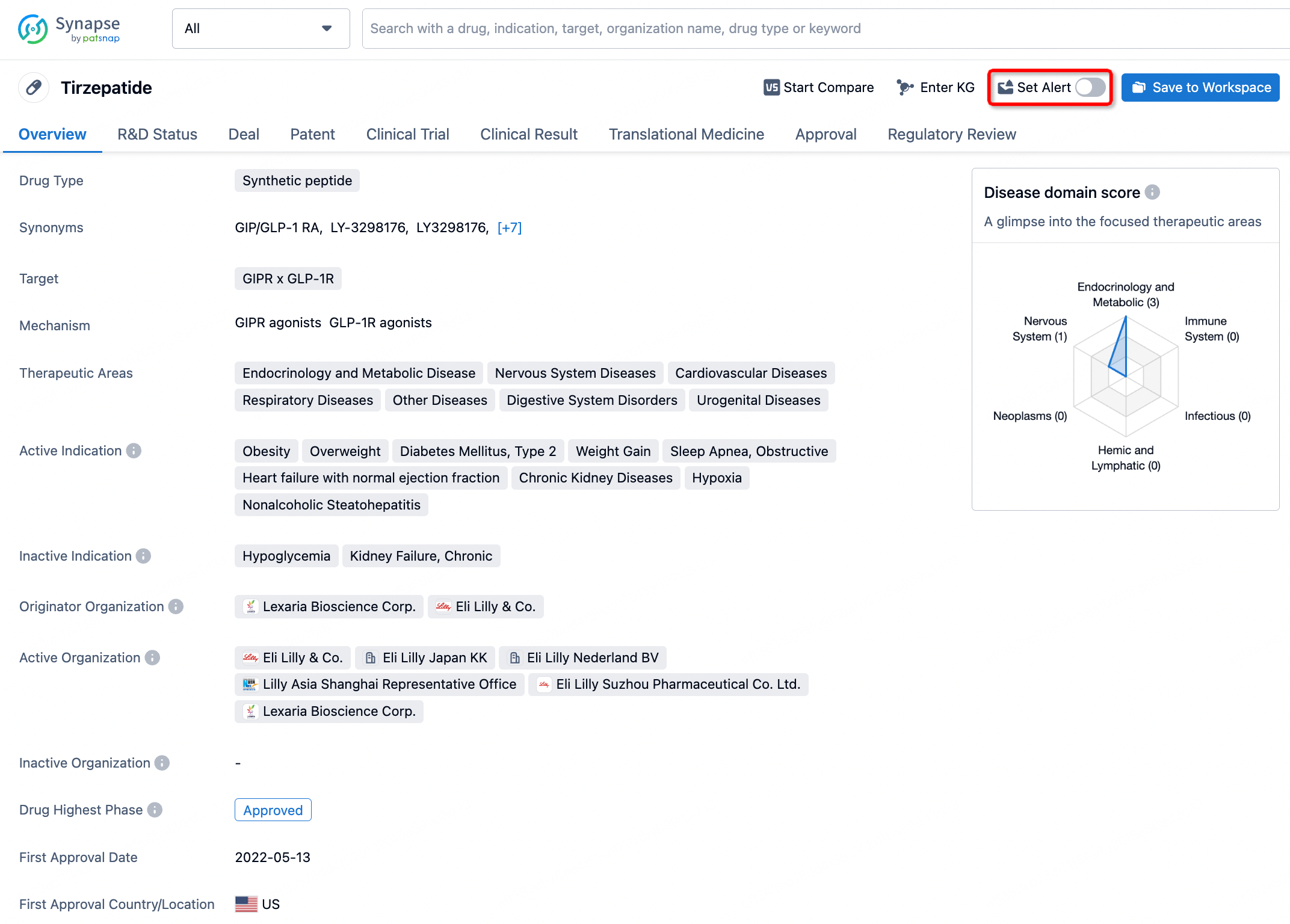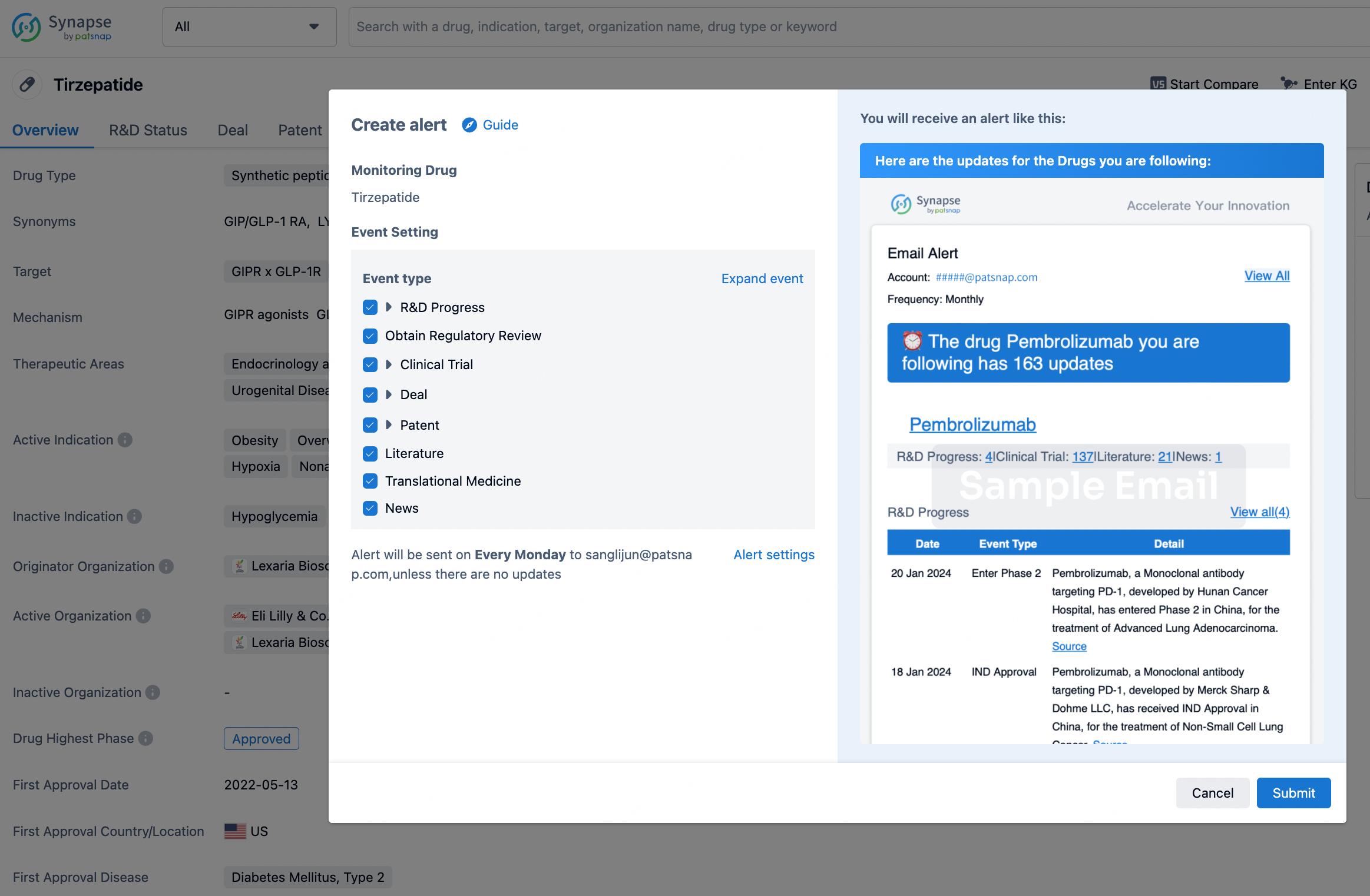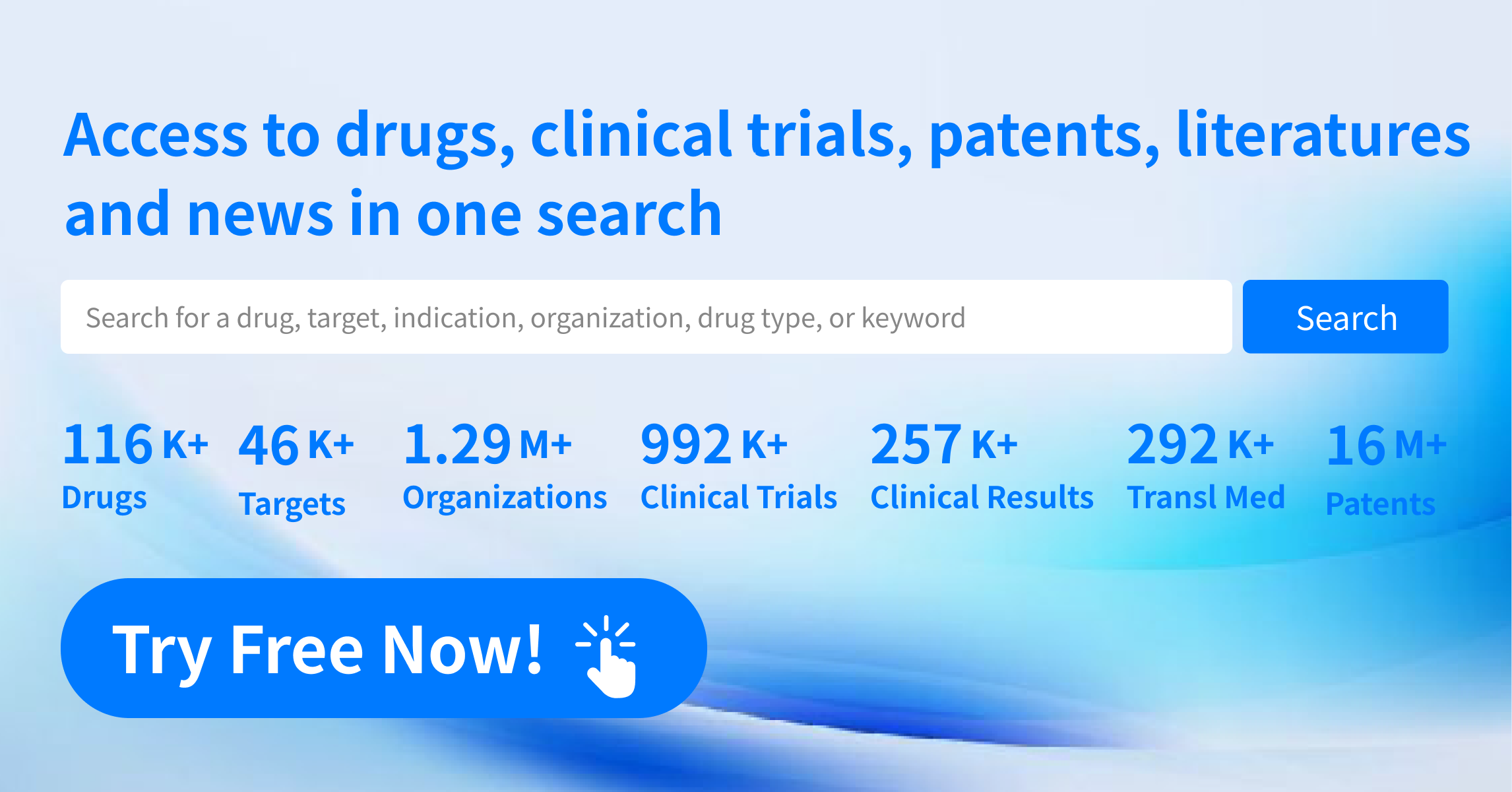Request Demo
What is Benzalkonium Chloride used for?
15 June 2024
Introduction to Benzalkonium Chloride
Benzalkonium Chloride (BZK or BAC) is a widely used antiseptic and disinfectant. It is known by several trade names, including Zephiran, Bactine, and Dettol, depending on the formulation and market. As a quaternary ammonium compound, Benzalkonium Chloride is utilized in a variety of applications, from surface disinfection to active ingredients in personal care products. The compound targets bacterial cell membranes, making it highly effective against a broad spectrum of bacteria, viruses, and fungi.
Research institutions globally are actively studying Benzalkonium Chloride, particularly its efficacy and safety in medical and consumer products. As an antiseptic, it is frequently included in products designed for wound cleaning, hand sanitizers, and nasal sprays. Its disinfectant properties are harnessed in household cleaners, industrial sanitizers, and even in healthcare facility sterilants. The progress in research continually aims to balance its potent antimicrobial effects with its potential for causing adverse reactions.
Benzalkonium Chloride Mechanism of Action
The primary mechanism by which Benzalkonium Chloride exerts its antimicrobial effects is through disruption of microbial cell membranes. Benzalkonium Chloride molecules are cationic surfactants, meaning they carry a positive charge. This charge allows them to interact with the negatively charged cell membranes of microbes. Upon contact, Benzalkonium Chloride molecules integrate into the lipid bilayers of these membranes, causing structural disorganization and increased permeability.
As the cell membrane integrity is compromised, essential intracellular contents such as ions and nutrients leak out, leading to cell lysis and death. This mechanism is effective against a wide range of pathogens, including gram-positive and gram-negative bacteria, enveloped viruses, and certain fungi. The speed and efficiency of this action make Benzalkonium Chloride a valuable component in various disinfectant and antiseptic formulations.
How to Use Benzalkonium Chloride
Benzalkonium Chloride is administered in different forms depending on the intended use. For antiseptic purposes, it is often found in solutions, gels, and sprays. For wound cleaning, a diluted solution is typically applied directly to the affected area. In hand sanitizers, it is used in concentrations that are effective yet safe for regular use on skin. Surface disinfectants containing Benzalkonium Chloride are available as sprays, wipes, and concentrated solutions that require dilution before use.
The onset time for Benzalkonium Chloride's antimicrobial action is relatively quick. Upon application, it begins to disrupt microbial cell membranes almost immediately, with significant reductions in microbial counts observed within minutes. The exact duration of activity can vary depending on the formulation and concentration, but Benzalkonium Chloride generally provides sustained antimicrobial effects, which is why it is frequently used in both healthcare and consumer settings.
What is Benzalkonium Chloride Side Effects
While Benzalkonium Chloride is highly effective as an antiseptic and disinfectant, its use is not without potential side effects. Common side effects may include skin irritation, redness, and itching, particularly with prolonged or repeated exposure. In more severe cases, it can cause contact dermatitis, which manifests as rash, swelling, and blistering. These reactions are typically due to the compound's harsh nature on the skin and mucous membranes.
Contraindications for Benzalkonium Chloride use are particularly relevant for individuals with known hypersensitivity to quaternary ammonium compounds. Such individuals should avoid products containing Benzalkonium Chloride to prevent allergic reactions. Additionally, caution is advised when using Benzalkonium Chloride on open wounds or mucous membranes, such as in the nasal passages, as it can cause irritation and potentially delay healing.
Ocular exposure to Benzalkonium Chloride should be avoided, as it can cause significant irritation and damage to the eyes. In the case of accidental eye contact, it is recommended to rinse the eyes thoroughly with water and seek medical attention if irritation persists. Ingestion of Benzalkonium Chloride is hazardous and can lead to gastrointestinal distress, nausea, vomiting, and in severe cases, toxicity requiring medical intervention.
What Other Drugs Will Affect Benzalkonium Chloride
Benzalkonium Chloride's efficacy can be influenced by the presence of other substances. Anionic surfactants, commonly found in soaps and detergents, can neutralize the activity of Benzalkonium Chloride by forming inactive complexes. Therefore, it is essential to avoid using anionic surfactants in conjunction with Benzalkonium Chloride to ensure its antimicrobial effectiveness.
Other antiseptics and disinfectants, such as alcohol, iodine, and chlorhexidine, do not typically interfere with Benzalkonium Chloride and can be used alongside it. However, combining multiple antiseptic agents can sometimes lead to increased skin irritation and should be done with caution and under professional guidance.
In summary, Benzalkonium Chloride is a potent and versatile antimicrobial agent used in various disinfectant and antiseptic products. Its mechanism of action involves disrupting microbial cell membranes, leading to rapid and effective pathogen eradication. Proper usage guidelines and awareness of potential side effects are crucial in maximizing its benefits while minimizing risks. Additionally, understanding the interactions with other substances can help maintain its efficacy and safety in different applications. Ongoing research continues to refine the use of Benzalkonium Chloride, ensuring it remains a valuable tool in infection control and hygiene practices.
Benzalkonium Chloride (BZK or BAC) is a widely used antiseptic and disinfectant. It is known by several trade names, including Zephiran, Bactine, and Dettol, depending on the formulation and market. As a quaternary ammonium compound, Benzalkonium Chloride is utilized in a variety of applications, from surface disinfection to active ingredients in personal care products. The compound targets bacterial cell membranes, making it highly effective against a broad spectrum of bacteria, viruses, and fungi.
Research institutions globally are actively studying Benzalkonium Chloride, particularly its efficacy and safety in medical and consumer products. As an antiseptic, it is frequently included in products designed for wound cleaning, hand sanitizers, and nasal sprays. Its disinfectant properties are harnessed in household cleaners, industrial sanitizers, and even in healthcare facility sterilants. The progress in research continually aims to balance its potent antimicrobial effects with its potential for causing adverse reactions.
Benzalkonium Chloride Mechanism of Action
The primary mechanism by which Benzalkonium Chloride exerts its antimicrobial effects is through disruption of microbial cell membranes. Benzalkonium Chloride molecules are cationic surfactants, meaning they carry a positive charge. This charge allows them to interact with the negatively charged cell membranes of microbes. Upon contact, Benzalkonium Chloride molecules integrate into the lipid bilayers of these membranes, causing structural disorganization and increased permeability.
As the cell membrane integrity is compromised, essential intracellular contents such as ions and nutrients leak out, leading to cell lysis and death. This mechanism is effective against a wide range of pathogens, including gram-positive and gram-negative bacteria, enveloped viruses, and certain fungi. The speed and efficiency of this action make Benzalkonium Chloride a valuable component in various disinfectant and antiseptic formulations.
How to Use Benzalkonium Chloride
Benzalkonium Chloride is administered in different forms depending on the intended use. For antiseptic purposes, it is often found in solutions, gels, and sprays. For wound cleaning, a diluted solution is typically applied directly to the affected area. In hand sanitizers, it is used in concentrations that are effective yet safe for regular use on skin. Surface disinfectants containing Benzalkonium Chloride are available as sprays, wipes, and concentrated solutions that require dilution before use.
The onset time for Benzalkonium Chloride's antimicrobial action is relatively quick. Upon application, it begins to disrupt microbial cell membranes almost immediately, with significant reductions in microbial counts observed within minutes. The exact duration of activity can vary depending on the formulation and concentration, but Benzalkonium Chloride generally provides sustained antimicrobial effects, which is why it is frequently used in both healthcare and consumer settings.
What is Benzalkonium Chloride Side Effects
While Benzalkonium Chloride is highly effective as an antiseptic and disinfectant, its use is not without potential side effects. Common side effects may include skin irritation, redness, and itching, particularly with prolonged or repeated exposure. In more severe cases, it can cause contact dermatitis, which manifests as rash, swelling, and blistering. These reactions are typically due to the compound's harsh nature on the skin and mucous membranes.
Contraindications for Benzalkonium Chloride use are particularly relevant for individuals with known hypersensitivity to quaternary ammonium compounds. Such individuals should avoid products containing Benzalkonium Chloride to prevent allergic reactions. Additionally, caution is advised when using Benzalkonium Chloride on open wounds or mucous membranes, such as in the nasal passages, as it can cause irritation and potentially delay healing.
Ocular exposure to Benzalkonium Chloride should be avoided, as it can cause significant irritation and damage to the eyes. In the case of accidental eye contact, it is recommended to rinse the eyes thoroughly with water and seek medical attention if irritation persists. Ingestion of Benzalkonium Chloride is hazardous and can lead to gastrointestinal distress, nausea, vomiting, and in severe cases, toxicity requiring medical intervention.
What Other Drugs Will Affect Benzalkonium Chloride
Benzalkonium Chloride's efficacy can be influenced by the presence of other substances. Anionic surfactants, commonly found in soaps and detergents, can neutralize the activity of Benzalkonium Chloride by forming inactive complexes. Therefore, it is essential to avoid using anionic surfactants in conjunction with Benzalkonium Chloride to ensure its antimicrobial effectiveness.
Other antiseptics and disinfectants, such as alcohol, iodine, and chlorhexidine, do not typically interfere with Benzalkonium Chloride and can be used alongside it. However, combining multiple antiseptic agents can sometimes lead to increased skin irritation and should be done with caution and under professional guidance.
In summary, Benzalkonium Chloride is a potent and versatile antimicrobial agent used in various disinfectant and antiseptic products. Its mechanism of action involves disrupting microbial cell membranes, leading to rapid and effective pathogen eradication. Proper usage guidelines and awareness of potential side effects are crucial in maximizing its benefits while minimizing risks. Additionally, understanding the interactions with other substances can help maintain its efficacy and safety in different applications. Ongoing research continues to refine the use of Benzalkonium Chloride, ensuring it remains a valuable tool in infection control and hygiene practices.
How to obtain the latest development progress of all drugs?
In the Synapse database, you can stay updated on the latest research and development advances of all drugs. This service is accessible anytime and anywhere, with updates available daily or weekly. Use the "Set Alert" function to stay informed. Click on the image below to embark on a brand new journey of drug discovery!
AI Agents Built for Biopharma Breakthroughs
Accelerate discovery. Empower decisions. Transform outcomes.
Get started for free today!
Accelerate Strategic R&D decision making with Synapse, PatSnap’s AI-powered Connected Innovation Intelligence Platform Built for Life Sciences Professionals.
Start your data trial now!
Synapse data is also accessible to external entities via APIs or data packages. Empower better decisions with the latest in pharmaceutical intelligence.


